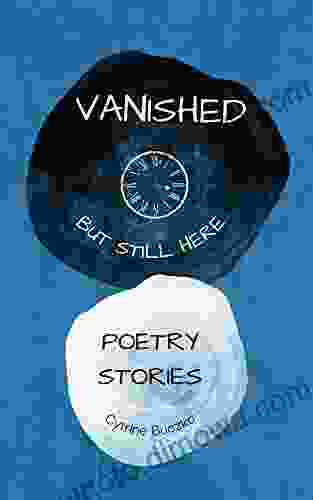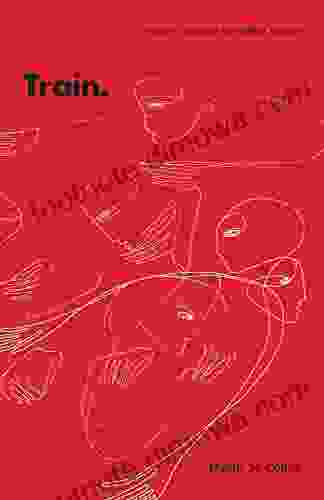Metropolitan Commuter Belt Tourism: A New Frontier in Tourism Analysis

As the tourism industry continues to evolve, it is essential to identify and explore new frontiers where untapped potential lies. One such frontier is Metropolitan Commuter Belt Tourism, which has emerged as a fascinating and promising avenue for tourism development. This article delves into the concept of commuter belt tourism, highlighting its significance, challenges, and opportunities. We will also explore real-world case studies and provide practical strategies for unlocking the tourism potential of commuter belts.
Defining Metropolitan Commuter Belt Tourism
Metropolitan commuter belts refer to the areas surrounding large metropolitan cities, typically within a one-hour commuting distance. These belts are often characterized by a high concentration of residential areas and a workforce that commutes to the city center for employment. Traditionally, commuter belts have not been considered major tourism destinations. However, recent trends have shown a growing interest in exploring the unique attractions and experiences offered by these areas.
5 out of 5
| Language | : | English |
| File size | : | 38698 KB |
| Screen Reader | : | Supported |
| Print length | : | 27 pages |
| Lending | : | Enabled |
| Hardcover | : | 340 pages |
| Item Weight | : | 1 pounds |
| Dimensions | : | 6.14 x 9.21 inches |
Metropolitan Commuter Belt Tourism focuses on promoting and developing tourism within these belts, recognizing their untapped potential and the diverse offerings they possess. By leveraging local assets, such as historical sites, cultural attractions, natural landscapes, and recreational opportunities, commuter belts can attract tourists and generate economic benefits for local communities.
Significance of Commuter Belt Tourism
- Economic Development: Tourism can act as a catalyst for economic growth in commuter belts. By attracting visitors and encouraging spending, local businesses, restaurants, and attractions can benefit from increased revenue.
- Community Revitalization: Tourism can help revitalize commuter belt communities by restoring historical landmarks, promoting local culture, and creating a sense of place. This can enhance the quality of life for residents and attract new businesses.
- Preservation of Heritage: Commuter belts often possess a rich historical and cultural heritage. Tourism can contribute to the preservation and appreciation of these assets by raising awareness and encouraging their conservation.
- Destination Diversification: For metropolitan areas, promoting tourism in commuter belts can diversify their tourism offerings and reduce overdependence on a single destination. This can spread the economic benefits of tourism and reduce overcrowding in popular urban areas.
Case Studies in Commuter Belt Tourism
To illustrate the potential of Metropolitan Commuter Belt Tourism, let's explore a few successful case studies:
Example Case Study 1: Bergen County, New Jersey
Bergen County, located just outside New York City, has transformed itself into a vibrant tourism destination. The county has capitalized on its proximity to the city while maintaining its unique identity. It boasts over 200 parks, numerous museums, and historical sites, including the New Jersey Naval Museum and the Meadowlands Sports Complex. By promoting these attractions and partnering with local businesses, Bergen County has attracted tourists and boosted its local economy.
Example Case Study 2: Chiba Prefecture, Japan
Chiba Prefecture, located on the outskirts of Tokyo, has successfully developed its tourism industry by promoting its natural beauty and local culture. The prefecture boasts sandy beaches, lush forests, and historical temples. It has also invested in developing local tourism infrastructure, such as bike paths and walking trails, making it easy for visitors to explore the region. As a result, Chiba Prefecture has become a popular weekend getaway and a major contributor to its regional economy.
Strategies for Unlocking Tourism Potential
Unlocking the tourism potential of metropolitan commuter belts requires a strategic approach. Here are some practical strategies to consider:
1. Identify Unique Attractions and Experiences
Start by identifying the unique attractions and experiences that your commuter belt has to offer. This could include historical landmarks, cultural events, natural landscapes, or recreational opportunities. Highlight these assets and develop marketing materials that showcase their appeal to potential tourists.
2. Develop Local Partnerships
Collaboration is key to the success of commuter belt tourism. Partner with local businesses, attractions, and community organizations to create a cohesive tourism experience. Offer joint promotions, develop package deals, and work together to enhance the overall tourism infrastructure.
3. Promote Accessibility and Connectivity
Ensure that your commuter belt is easily accessible to tourists. Improve transportation options, such as public transit or shuttle services, to make it convenient for visitors to get around. Consider developing walking or biking trails to connect attractions and encourage exploration.
4. Leverage Technology and Social Media
Utilize technology and social media to promote your commuter belt's tourism offerings. Create a dedicated website and social media pages where tourists can find information, book experiences, and engage with local businesses. Encourage visitors to share their experiences and generate user-generated content to build credibility and authenticity.
5. Monitor and Evaluate Results
Regularly monitor the performance of your tourism initiatives and gather feedback from tourists. Use this information to identify what is working well and what can be improved. Adjust your strategies as needed to ensure that you are maximizing the tourism potential of your commuter belt.
Metropolitan Commuter Belt Tourism offers a promising new frontier for tourism development. By recognizing the unique attractions and experiences that commuter belts possess, and by implementing strategic approaches, communities can unlock their tourism potential and reap the economic and social benefits it brings. This comprehensive guide has provided insights, case studies, and practical strategies to help you develop and implement successful commuter belt tourism initiatives.
As the tourism industry continues to evolve, it is essential to embrace innovation and explore emerging opportunities. Metropolitan Commuter Belt Tourism is one such opportunity that holds immense promise for the future of tourism. By embracing its potential and working collaboratively, we can create vibrant and sustainable tourism destinations that benefit local communities and enrich the travel experiences of visitors.
5 out of 5
| Language | : | English |
| File size | : | 38698 KB |
| Screen Reader | : | Supported |
| Print length | : | 27 pages |
| Lending | : | Enabled |
| Hardcover | : | 340 pages |
| Item Weight | : | 1 pounds |
| Dimensions | : | 6.14 x 9.21 inches |
Do you want to contribute by writing guest posts on this blog?
Please contact us and send us a resume of previous articles that you have written.
 Book
Book Novel
Novel Page
Page Chapter
Chapter Text
Text Story
Story Genre
Genre Reader
Reader Library
Library Paperback
Paperback E-book
E-book Magazine
Magazine Newspaper
Newspaper Paragraph
Paragraph Sentence
Sentence Bookmark
Bookmark Shelf
Shelf Glossary
Glossary Bibliography
Bibliography Foreword
Foreword Preface
Preface Synopsis
Synopsis Annotation
Annotation Footnote
Footnote Manuscript
Manuscript Scroll
Scroll Codex
Codex Tome
Tome Bestseller
Bestseller Classics
Classics Library card
Library card Narrative
Narrative Biography
Biography Autobiography
Autobiography Memoir
Memoir Reference
Reference Encyclopedia
Encyclopedia Cindy Ticknor
Cindy Ticknor Cure Dolly
Cure Dolly Cynthia Phillips
Cynthia Phillips Cornell Tribbet
Cornell Tribbet Colin Pask
Colin Pask David Blevins
David Blevins Shando Varda
Shando Varda Timothy Brian Mckee
Timothy Brian Mckee Phil Liggett
Phil Liggett Lucinde Hutzenlaub
Lucinde Hutzenlaub Kim G Robinson
Kim G Robinson Katrina Brown
Katrina Brown Steven J Meyers
Steven J Meyers Eevi Jones
Eevi Jones Cole Nagamatsu
Cole Nagamatsu Keiichi Sigsawa
Keiichi Sigsawa Dio Lewis
Dio Lewis Henry Bursill
Henry Bursill Connie Bruck
Connie Bruck Cindi Walton
Cindi Walton
Light bulbAdvertise smarter! Our strategic ad space ensures maximum exposure. Reserve your spot today!
 Garrett PowellFollow ·4k
Garrett PowellFollow ·4k Leo MitchellFollow ·5.9k
Leo MitchellFollow ·5.9k Devin CoxFollow ·18.1k
Devin CoxFollow ·18.1k DeShawn PowellFollow ·3.1k
DeShawn PowellFollow ·3.1k Aubrey BlairFollow ·7.1k
Aubrey BlairFollow ·7.1k Carlos DrummondFollow ·19.2k
Carlos DrummondFollow ·19.2k Michael SimmonsFollow ·17.9k
Michael SimmonsFollow ·17.9k Allan JamesFollow ·16.1k
Allan JamesFollow ·16.1k

 Howard Blair
Howard BlairThe Bewitching of Camille: A Mystical Tapestry of...
Prepare to be...

 Kirk Hayes
Kirk HayesUnraveling the Enigmatic Tale of "Vanished But Still...
In the labyrinth of memory...

 Joe Simmons
Joe SimmonsDogwild: An Unforgettable Literary Odyssey into the Heart...
Delve into the Untamed...

 Edgar Allan Poe
Edgar Allan PoeIndulge in Culinary Delights: Your Ultimate Costa Brava...
Discover the Flavors of Spain's Coastal...
5 out of 5
| Language | : | English |
| File size | : | 38698 KB |
| Screen Reader | : | Supported |
| Print length | : | 27 pages |
| Lending | : | Enabled |
| Hardcover | : | 340 pages |
| Item Weight | : | 1 pounds |
| Dimensions | : | 6.14 x 9.21 inches |
















